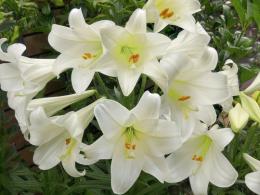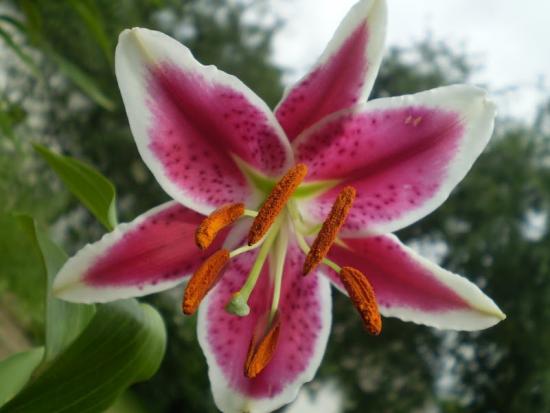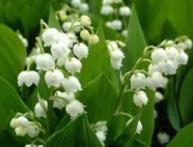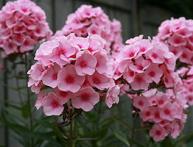How to properly care for garden lilies at home

Lily is a perennial plant that will decorate and enliven any garden area. Since ancient times, the white lily has been considered one of the most beautiful flowers on Earth. Lily flowers come in a wide variety of colors and sizes.
To date, several thousand have been withdrawn varieties There are more than 100 species of this plant in nature. Gardeners love this flower. A rich assortment allows you to choose the most suitable plant. Caring for lilies is simple; they are unpretentious plants.
Content
Bulb care
Bulbs purchased in the spring should be stored in a cool place before they are planted. It is better to put them in a plastic bag, add a little peat and place them in the refrigerator. Another storage option is an airtight container with sawdust; instead of sawdust, you can put moss. In this way, the bulbs can be stored for no more than 2 months.
The bulbs can dry out and get wet; you need to periodically spray the peat or moss with water, and wet bulbs will need to be dried. Before planting, they are treated with a weak solution of potassium permanganate. Onions are planted in late summer or early September, but this can also be done in May.
What soil do lilies need?
Lilies need loose, nutritious soil that allows moisture to pass through well. The following types are suitable for planting: soil:
- sandy loam
- light loam
- garden soil
Some varieties grow well in acidified soil (Daur and Tiger lilies), slightly alkaline (White and Kudrevataya) and neutral soil. Damp and heavy soil will not work; moisture will accumulate in such soil and the plant will rot. Such soil should be loosened. Three weeks before planting the bulbs, add sand, peat and humus. For successful flower growth, it is important that melt water does not accumulate in the planting areas in the spring.
The soil is fertilized before planting. Fertilizing is carried out with fertilizers containing:
- potassium
- nitrogen
- phosphorus
Fertilizers are applied to the soil and the soil is dug up, after which it needs to be leveled and watered well.
Planting bulbs
Time landings depends on the variety and region. The place allocated for lilies should be well lit in the first part of the day, and shading is desirable in the afternoon. Excessive sun rays can lead to diseases, the plant will grow and develop poorly. The site must be protected from strong winds and drafts
For each type of lily, there is an individual depth for planting the bulbs; it varies from 7 to 12 cm. The larger the bulb, the deeper it will need to be planted. The distance between the bulbs depends on the height of the plant. Tall plants are planted at a distance of 20 - 25 cm, between medium-sized ones they keep from 10 to 15 cm.
The planting site is changed every five years. You should not grow flowers in the same area for many years.
Flowers are replanted in August. The bulbs are dug out with a pitchfork. The procedure is carried out with extreme caution so as not to damage the roots. Then the bulbs should be washed and treated with a weak solution of potassium permanganate (0.1%). After they dry, begin replanting.Frequent transplants are unacceptable, they can harm the plant.
How to fertilize lilies
Plants fertilize in the spring, when the first shoots hatch, and in the fall, in October. In the spring they need more nitrogen, and choose mineral fertilizers without nitrogen. For lilies, you need to purchase special fertilizers that are intended for bulbous plants.
Lilies require mineral fertilizers. But organic fertilizers are contraindicated for them; they cannot be applied to the soil where lilies grow, as well as compost. This will increase foliage growth to the detriment of flowering, and winter hardiness may also decrease.

Wood ash will help cope with pests, in addition, it will save the plant from many fungal diseases. It is worth considering the fact that ash reduces the acidity of the soil, while some varieties of lilies prefer acidic soil. For preventive purposes, plants are treated with Bordeaux mixture; this can be done three times during the season.
Flower care
Caring for lilies involves weeding and watering. During dry periods, the plant requires abundant watering.
Watering rules:
- lilies need to be watered to the very root; the leaves should not be allowed to become waterlogged, as this can cause gray rot to develop.
- watering should not be frequent, but plentiful
- drying out is unacceptable soilTo prevent this, mulch with the addition of peat
- As soon as the lily fades, you don’t need to water it
Throughout the summer, the soil will need to be loosened regularly. Tall plants with heavy, large flowers need to be tied to a small stand, otherwise the stem may break. Flowers are cut diagonally so that water does not accumulate in the cut and the plant does not rot.The scissors must be washed first to avoid introducing bacteria.
Pest and disease control
The most dangerous pest for lilies is the lily beetle. The pest spoils the leaves and gnaws the buds. Insects are collected by hand, but if there are a lot of them, you can spray the flowers with karbofos or fitoverm. These same products will help destroy aphids.

Lilies can be attacked by wireworms, mole crickets, thrips, and the larvae of the cockchafer are dangerous for flowers. These pests are destroyed with the following drugs:
- Thunder
- Grizzly
- Fly eater
Roots and bulbs are gnawed by mice to get rid of them, flower beds are dusted with colloidal sulfur. Mice do not like daffodils; the scent of these flowers repels rodents, so you can plant these flowers nearby.
Insecticides spoil the appearance of leaves and buds. Plants treated with chemicals lose their decorative appearance. Lilies May suffer from rot and brown spot. To save flowers from such diseases, they are treated with Borodos liquid or phytosporin.
Preparing for winter
Flowers need to be prepared for wintering. Lilies overwinter in different ways, depending on the variety, as well as the climate of the region in which the flowers grow. Daurian lilies and Asian hybrids tolerate frost well. But Royal lilies need to be well covered. American lilies and oriental hybrids are dug out of the soil, and the flower bulbs spend the winter in a cool place.
They are stored on the bottom shelf in the refrigerator or, if possible, in the basement, having previously been placed in boxes. Shelter for the winter is usually done in October. Dried foliage is cut off at a distance of 1 cm from the ground, and bulbsremaining in the soil are covered with polyethylene or covered with peat or spruce branches.In the spring, the spruce branches will need to be removed, otherwise the sprouts will be damaged. But you can leave the peat.
Technology of growing lilies on video:










